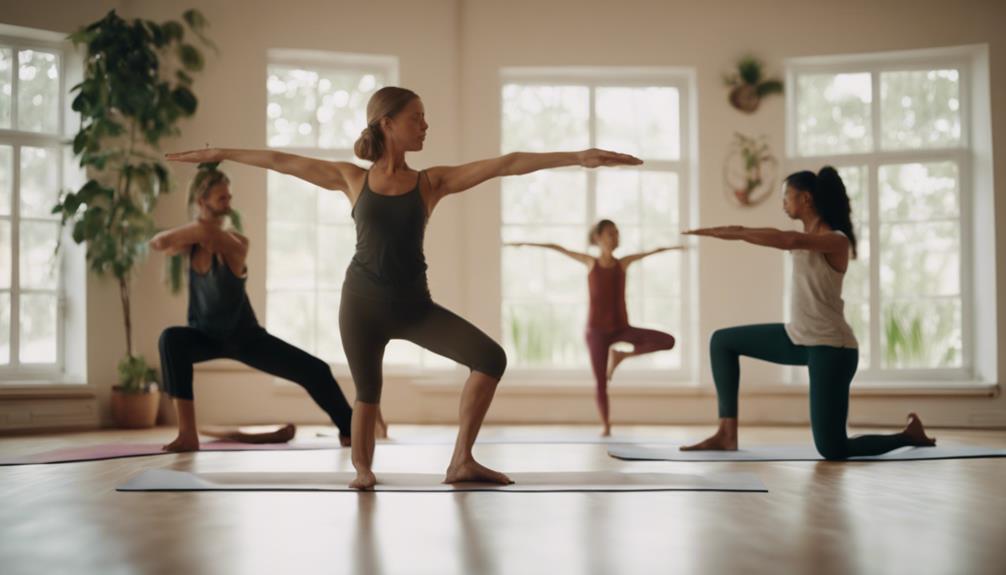Is Yoga Against Catholicism

Yoga has gained immense popularity over recent decades, transcending its origins in ancient India to become a global phenomenon. However, the question often arises: is yoga against Catholicism? This blog post delves into the nuances of yoga, its spiritual connotations, and how it intersects with Catholic beliefs. We aim to provide an informed perspective that respects both yoga practitioners and those devoted to the Catholic faith, ultimately clarifying whether these two worlds can coexist.
The Origins of Yoga: A Brief Historical Overview
To understand the relationship between yoga and Catholicism, it’s essential to grasp the origins of yoga itself. Yoga is rooted in ancient Indian philosophy, primarily associated with Hinduism, Buddhism, and Jainism. It encompasses physical, mental, and spiritual practices that aim to foster harmony between mind and body. The term “yoga” originates from the Sanskrit word “yuj,” which means “to unite.” While yoga is often perceived as a purely physical exercise today, its spiritual roots emphasize self-realization and connection to the divine, which is a point of contention for some Christians.
Core Principles of Catholicism
Catholicism, one of the largest branches of Christianity, is built on the teachings of Jesus Christ and the traditions of the Church. Central tenets include the belief in one God, the importance of faith and good works, the sacraments, and the authority of the Pope. Catholic doctrine emphasizes a personal relationship with God and the salvation of souls, which can seem at odds with the more abstract spiritual goals of yoga. Understanding these core principles is crucial to exploring whether yoga contradicts Catholic beliefs.
Yoga’s Spiritual Dimensions: A Catholic Perspective
Many Catholics express concern that yoga’s spiritual aspects may conflict with their faith. Some argue that the meditative and philosophical components of yoga—such as chakras, energy centers, and concepts like “Namaste”—are inherently incompatible with Christian teachings. Critics often cite passages from the Bible that warn against engaging with practices outside of Christian doctrine. However, others argue that yoga can be practiced as a physical discipline without embracing its spiritual roots, focusing instead on health benefits and stress relief.
Yoga as a Form of Physical Exercise: A Neutral Stance
From a purely physical standpoint, yoga can be seen as beneficial for health and wellness. Many Catholics engage in yoga primarily for its physical benefits, such as improved flexibility, strength, and relaxation. In this context, yoga serves as a form of exercise rather than a spiritual practice, which some Catholic leaders have acknowledged. This perspective allows individuals to enjoy the health benefits of yoga while maintaining their religious beliefs, suggesting that yoga does not have to be at odds with Catholicism if practiced in a secular manner.
Addressing Misconceptions: Yoga and the Christian Faith
One of the significant barriers to reconciliation between yoga and Catholicism is the prevalence of misconceptions. Many people associate yoga exclusively with Eastern religions, assuming that practicing yoga means adopting those beliefs. However, it’s important to recognize that yoga can be adapted to fit various belief systems. Some Christian yoga practitioners incorporate scripture and prayer into their sessions, transforming traditional yoga practices into a form of worship and meditation focused on God. This approach challenges the idea that yoga must be inherently opposed to Catholicism.
The Role of Intent: How Mindset Influences Yoga Practice
The intent behind practicing yoga plays a crucial role in its compatibility with Catholicism. For instance, if practitioners approach yoga with the aim of enhancing their spiritual connection to God, it can become a form of prayer and meditation rather than a conflicting practice. Many Catholic leaders encourage mindfulness and reflection, which are also key components of yoga. By reframing yoga as a tool for fostering inner peace and closeness to God, individuals can reconcile their faith with their practice, illustrating that it is not necessarily against Catholicism.
Practical Tips for Catholics Interested in Yoga
For Catholics curious about incorporating yoga into their lives, there are practical considerations to keep in mind. Firstly, seek out classes or instructors who focus on the physical aspects of yoga without delving into spiritual or religious themes. Alternatively, consider practicing yoga at home using instructional videos that emphasize fitness and relaxation. Moreover, integrating prayer or scripture reading before or after yoga sessions can help maintain a connection to the faith. These strategies can help individuals enjoy the benefits of yoga while remaining anchored in their Catholic beliefs.
Conclusion: Finding Balance Between Yoga and Catholicism
In conclusion, the question of whether yoga is against Catholicism does not have a straightforward answer. It largely depends on individual perspectives, intentions, and the manner in which yoga is practiced. While traditional yoga may carry spiritual implications that conflict with Catholic teachings, many practitioners find ways to adapt their practice to align with their faith. Ultimately, it is possible to engage with yoga as a form of physical exercise, mindfulness, and relaxation without compromising one’s Catholic beliefs. By fostering an open dialogue and understanding, yoga and Catholicism can coexist harmoniously for many individuals seeking both physical and spiritual fulfillment.
By addressing these complexities and providing insights into the compatibility of yoga and Catholicism, we can create a more inclusive understanding of how diverse practices can enrich one’s faith and well-being. Whether you are a devoted Catholic or a curious yoga enthusiast, it’s essential to approach this topic with an open mind and a willingness to explore the many ways that different practices can complement each other.How Many Times A Week For YogaIs Yoga And Walking Enough Exercise